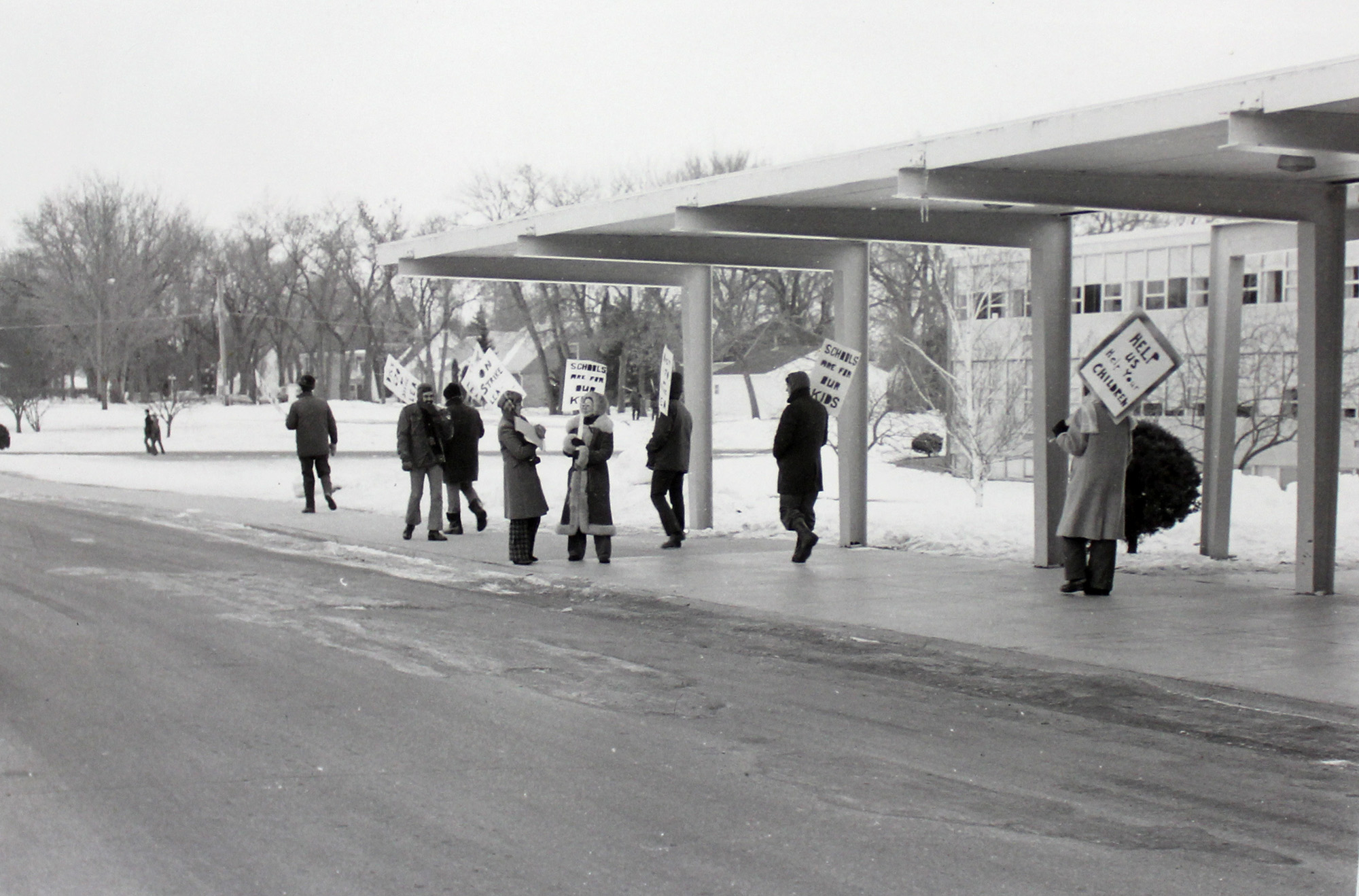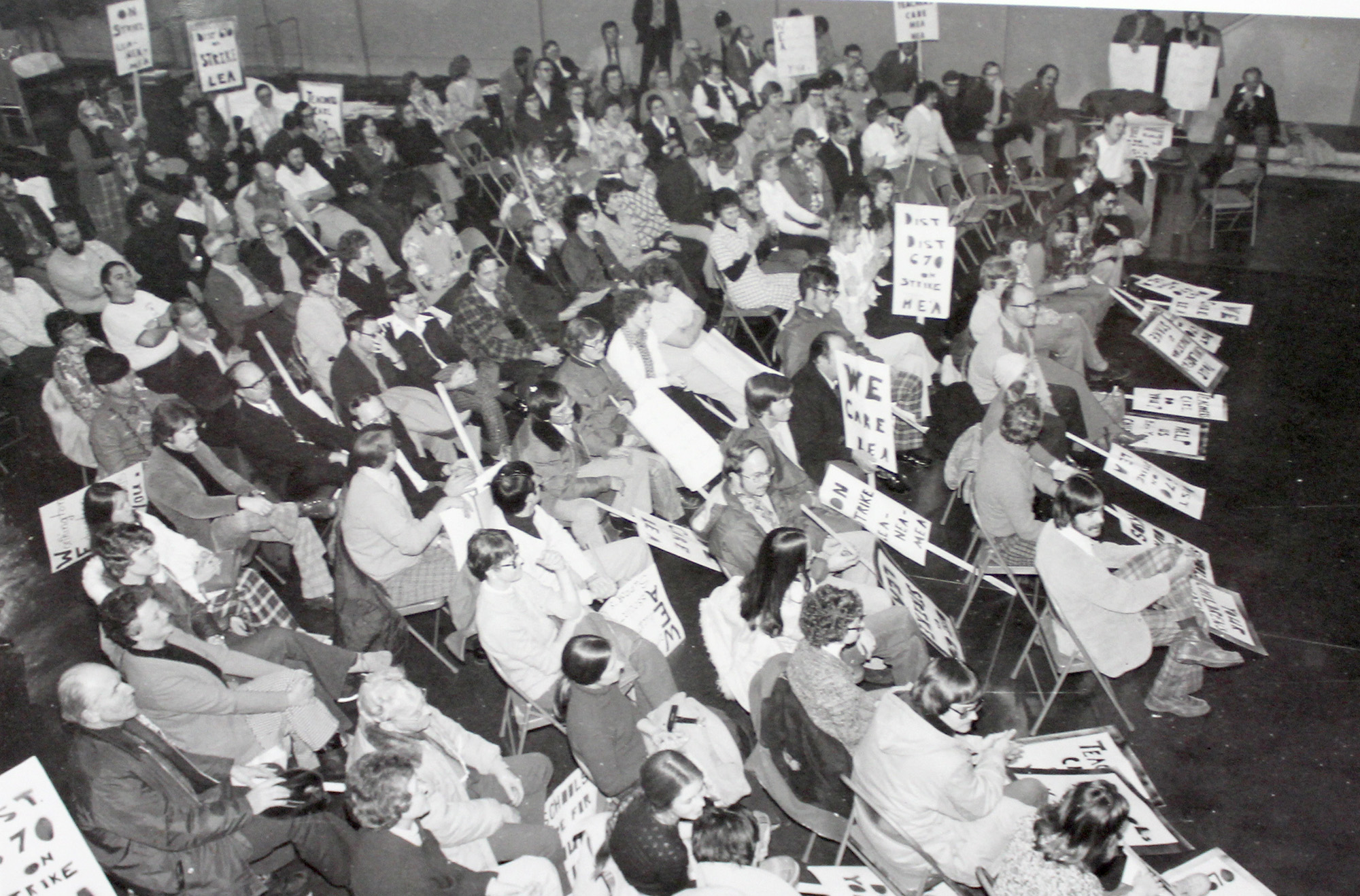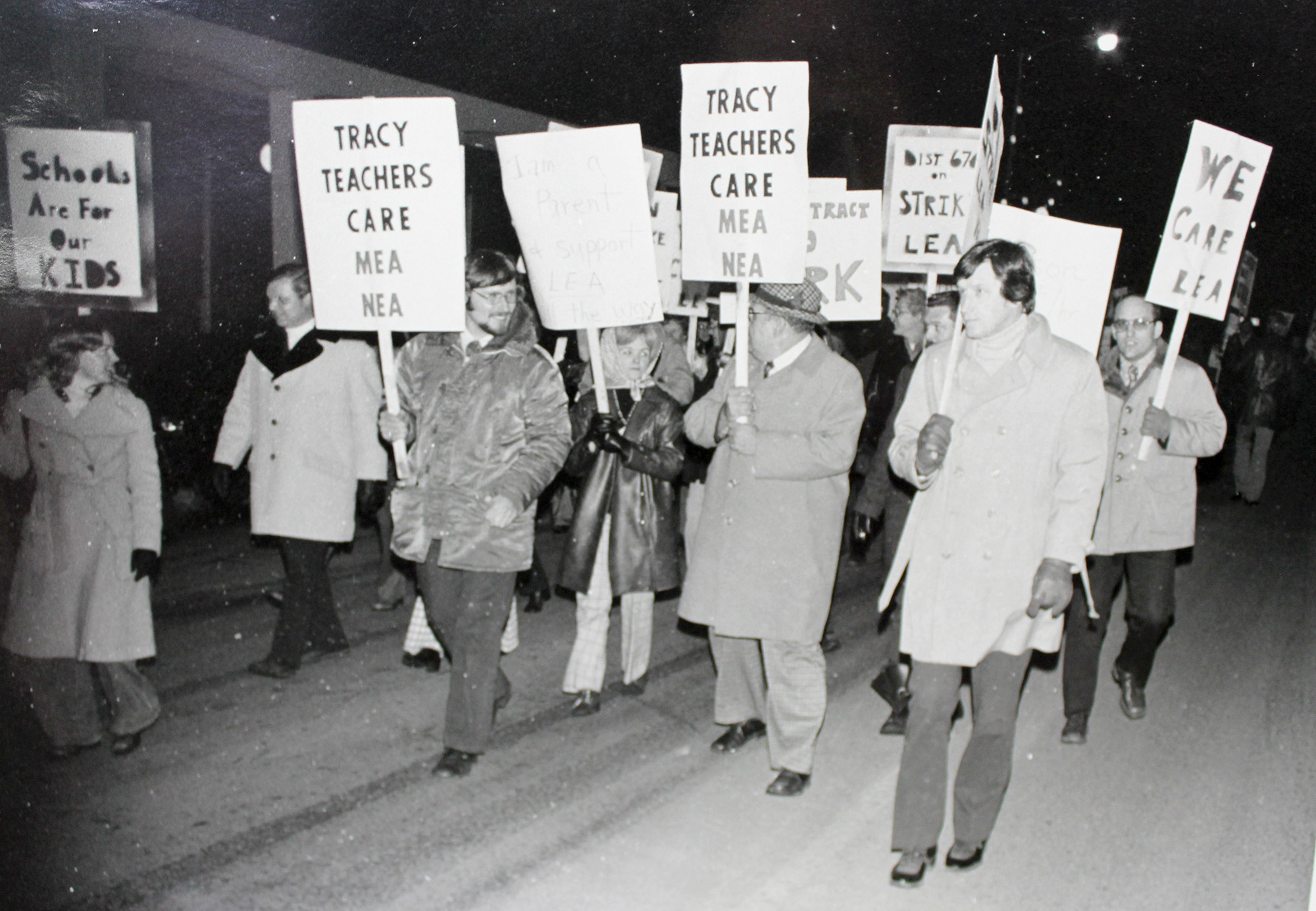 ,
,  ,
, 
Forty years ago this week, teachers in Luverne Public Schools went on strike as one of seven Minnesota school districts to do so in 1975.
Their action canceled classes from Dec. 12 to Dec. 19, giving students and non-union staff a long Christmas break. Classes resumed Jan. 5, 1976.
A four-inch thick, three-ring binder titled “A Time Remembered,” chronicles events before and after the first and only teachers’ strike conducted in the Luverne district.
Retired teacher Jerry Jensen recently gave the binder to the Rock County Historical Society archives. “I was the last one to retire that was in the strike,” he said.
Jensen is one 87 teachers who participated in the teachers’ strike of 1975. He was also one of the 70 percent of those who participated who continued to make Luverne their home decades after the strike’s settlement.
Another teacher who retired from Luverne Public Schools was Gordon Gits, who was responsible for the “A Time Remembered” binder’s creation.
Gits was a high school English teacher and served as the communications chairman for the Luverne Education Association during the strike. Gits died in 2012.
The strike bonded those involved to stay in the Luverne community after its conclusion.
“One fringe benefit of that whole strike experience is that we became the most closely knit staff of any group of teachers to come through the system,” recalled retired high school teacher Esther (Spease) Frakes.
They still meet, now as retirees, each fall.
Jensen joined the group in 2011.
He was a third-year teacher in Luverne when he voted to strike effective at 8 a.m. Friday, Dec. 12.
“It was cold,” Jensen said of picketing in front of the high school in freezing temperatures.
Not on the picket line was teacher David Svingen, who served as negotiator for the Luverne Education Association and was advocating for eight additional items to be added to the master contract.
Among the items was a fixed work year of 179 days and salary increases of 14.8 percent.
A master contract was a new document between school boards and teacher unions. The contract provided uniformity among school districts.
“Master contracts came into being one negotiation maybe two before (1975),” Svingen said.
Contracts for the 1975-76 and 1976-77 school years went unsigned by both sides as the 1975-76 school year got underway.
Negotiations continued before and after the strike. The contract was formally signed on Jan. 10, 1976, retroactive to the beginning of the school year.
Erling Tofteland is a retired farmer living in Luverne. He chaired the School Board and the board’s negotiating committee under the guidance of then superintendent Harvey Eitreim. Tofteland served another two terms on the school board after the strike. Eitreim retired from the district in 1978.
He said the School Board felt the pressure from the local teachers’ union to increase salaries. The board had proposed a 2.3-percent increase.
“We were offering more than others in the area,” Tofteland said. “It wasn’t right to force other districts into giving a higher raise.”
The School Board had 13 items to add or change on the master contract. Besides a salary increase, the board wanted to remove the clause about mutual consent between staff and administration on curriculum and staff assignments.
“We didn’t think we needed people telling them (the administrators) how to do things,” Tofteland said.
Negotiations reached an impasse on Dec. 8, 1975, when frustration and anger generated at the School Board meeting set the strike in motion.
Retired high school teacher Jim Sanden was LEA’s president and he and his officer team began preparing for the strike months before it occurred.
“We knew negotiations weren’t going well,” he recalled from his Sioux Falls, South Dakota, home.
“It was terrifying.”
Legal strikes were new provisions under state law, giving public employees the right when negotiations reached an impasse.
It was a provision that had little use.
Prior to Luverne’s teacher strike, only three other school districts had declared such an event. Those three declared strikes began one to three days before Luverne’s.
The local union prepared for a long impasse. Materials in the “Time Remembered” binder showed picketing schedules planned through Jan. 6, 1976.
Six of the seven strikes lasted less than one week. The longest in Faribault lasted 27 days.
Uncertainty was also prevalent among the students who were confused and anxious about the impending strike.
“Leading up to that day (Dec. 12, 1975) there were vibes,” said then senior class president Ken Hup.
“The kids were afraid if this strike happened that classes would go into the summer.”
A day before teachers left the classroom for the picket line, Hup said senior high students began walking out of class and gathering in the gymnasium, staging a strike of their own.
Hup said he talked students in going back to class as the student council sought answers on their behalf. “They just wanted to be heard,” Hup said.
In the end, Luverne ratified a 17-percent economic package through the Bureau of Mediation Services in a meeting in the Twin Cities.
The master contract was also modified, lessening the mutual consent clause between administration and teachers.
Current district business manager Marlene Mann is one of the last employees involved in administration 40 years ago. Mann was a secretary in the superintendent’s office.
As business manager she is now a participant in the district’s contract negotiations. The strike has given her a focus when attending the sessions.
“I would rather look forward (for what’s best for the district) instead of dwelling in the past,” Mann said.
While the teachers’ union kept a binder from the strike, the district did not. “We try to forget it,” Mann said.


